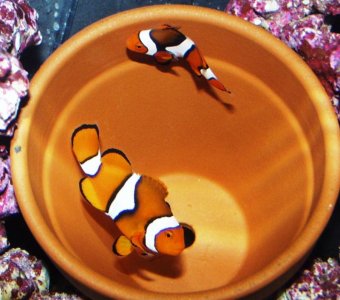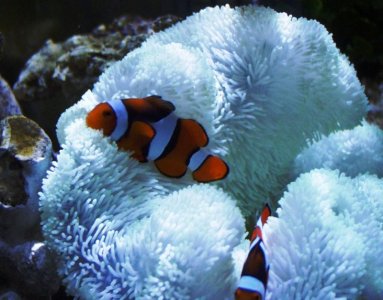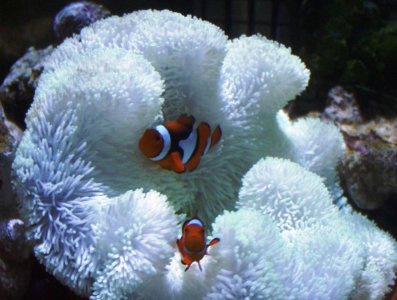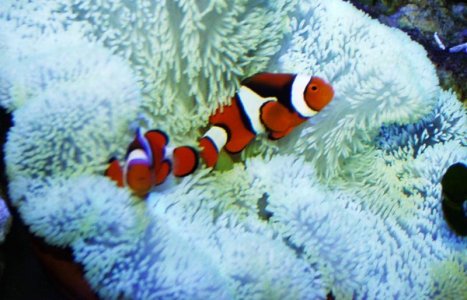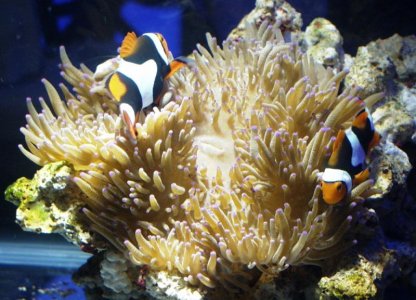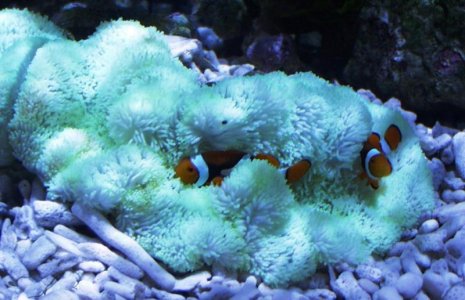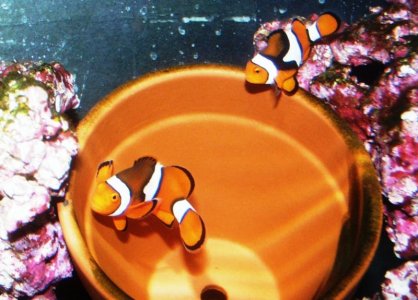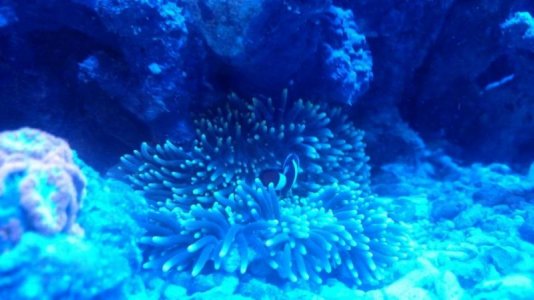Time for an update!
Pair #1:
<iframe width="560" height="315" src="https://www.youtube.com/embed/Yf892srj76A" frameborder="0" allowfullscreen></iframe>
<iframe width="560" height="315" src="https://www.youtube.com/embed/QIX3JpBfR7A" frameborder="0" allowfullscreen></iframe>
This was them about 18 months ago:
They have grown a bit, but not as much as I would have expected. Both are still small and a long way from spawning.
The female developed a "blonde" spot at the base and in her hard-rayed dorsal fin while the male got all black in the front.
These two never leave their gigantea more than a body length, not even for food that is a bit higher right above the anemone.
Pair #4
<iframe width="560" height="315" src="https://www.youtube.com/embed/XhOWok5OJAU" frameborder="0" allowfullscreen></iframe>
The purple gigantea was the last I bought (never needed treatment) and the tan-green gig is my very first which came from LA and was my first successful Cipro treatment. That one suffered a bit from it's time in the 18" cube but is getting better now with daily feedings.
This was pair #4 13 months ago:
12 Months ago in what seemed to have been a crispa:
Their colors stayed pretty much unchanged and both have grown significantly. The female almost doubled in length an looks by now as if she is getting ready to spawn. Just in case I already offered them a ceramic shard.
The male was pretty beaten up and had the first rays of his dorsal fin clipped when I got him. By now those bones have regrown a bit, but you can still see that the front of his fin is shorter than it should be.
They are less afraid to leave the anemone(s) and have also take exploration trips to the middle of the tank.
I'm glad I convinced myself to take them - back then I was close to not take them and wait for a better pair (which never came and then the store closed).
These two are on the way to become my best pair and likely the first to spawn.



